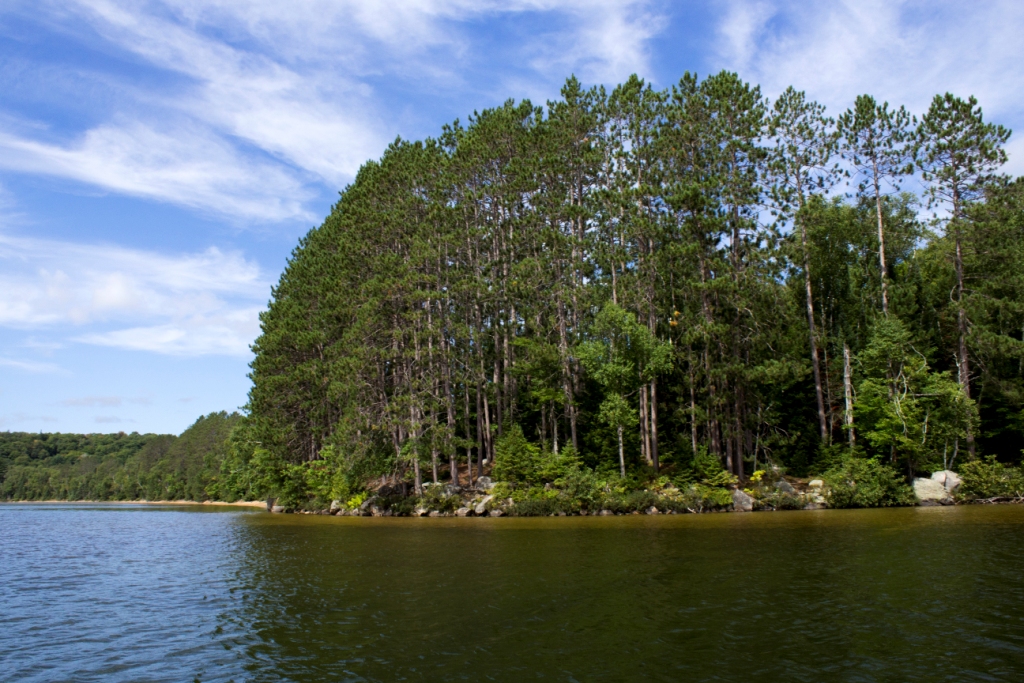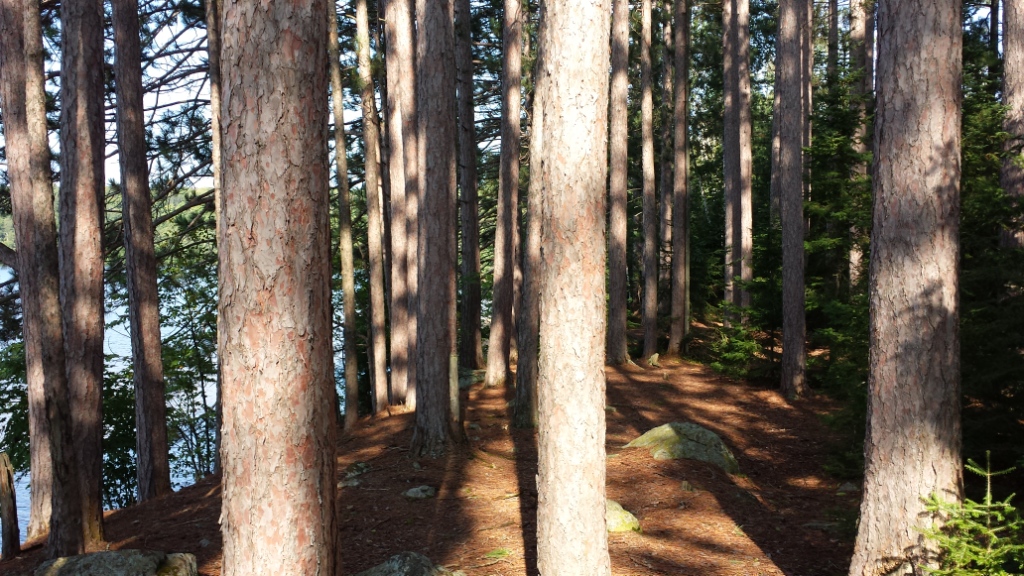 |
| Norway Point is part of the Mabel Hart Brook and Marion Hill Memorial Foundation property, between First and Second Sandy beaches on Bella Lake (photo by Devon Gawluk). |
The push during the free land grant years to clear land for agriculture, and the subsequent years of timbering and deforestation, resulted in a great change to the natural landscape across the region, including around Bella and Rebecca Lakes. Forest regeneration did follow a natural succession of growth; however, by the 1930s pine plantations were being established across the province to aid in reforestation. Starting after World War I, in an effort to address impacts such as soil erosion, trees were made available to landowners, either free or at discount, during the government’s reforestation efforts.
Although many varieties of scots pine were frequently used, other species such as white, jack, and red pine (also known as norway pine) were also planted. Red pine seems to have been most frequently planted in the Bella-Rebecca area, where well-drained and sandier soils support their growth. For up to five decades, red pine was a popular choice for reforestation projects, and several small stands occur sporadically throughout our community.
It is believed that Edgar Brook (Brookie) planted the red pine on Norway Point, as well as along other parts of the shore in the 1930s or 1940s. By then the land on the north shore of Bella Lake, as with other places, had been logged more than once, and although early succession species such as birch and conifers like white pine were re-establishing themselves, owner Gordon Hill may have found tree planting desirable for several reasons. The area was an attraction for the guests of the two local and major tourist establishments (Billie Bear and Limberlost), as well as the early cottagers arriving to the lakes. Gordon may have wanted to improve the aesthetics of the shoreline for this reason, and perhaps also to help promote his plan to sell smaller subdivided lots along this shore.
 |
||
| Among the red pines (photo by Wendy Burgess) |
We may never know who first called the beautiful pine-dominated point at the east end of Second Sandy “Norway Point.” Although it may be safe to assume that it was called that after the Norway pines that were planted there, another idea remains. Around the same time that Gordon Hill purchased his Bella Lake properties, he owned the property between Oxbow and Dotty Lakes, which he called Interlaken. He built an outpost there for his riding guests from Limberlost, and it follows that he probably also planted the red pines that grow there. During World War II, in 1941, he sold the lands to the Norwegian government, which renamed the property Vesle Skaugum (a home or clearing in the woods). The property was used for about four years as a rest and training camp for Norwegian Air Force pilots, and many of these young men, spending time in the community, made an impression on the locals. They were known to have visited Bella Lake and would even participate in the barn dances at Billie Bear. One wonders whether Norway Point could have been named in honour of these men who briefly visited the area during wartime.
Sources:
Hutcheson, Bob, personal communication, October 2018.
Ministry of Natural Resources, LandOwner Resource Centre, “Extension Notes: Managing Red Pine Plantations,” 1999, www.lrconline.com/Extension_Notes_English/pdf/mngng_rd_pn.pdf.



